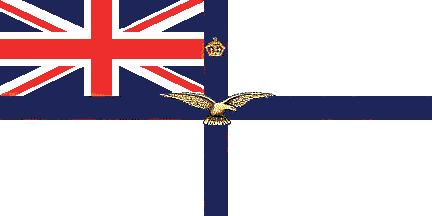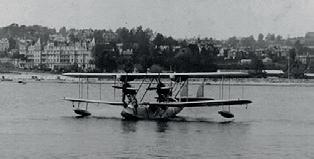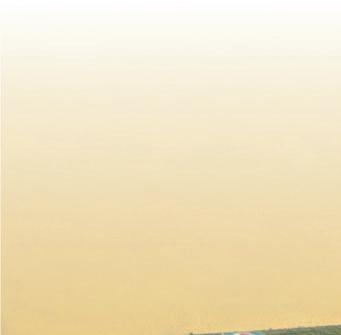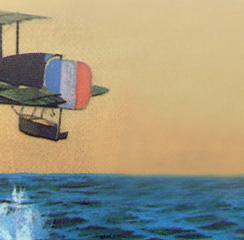
4 minute read
Chocks away! Former DAA Pilot and current aviation Safety Manager Rob Mackie has a passion for aviation in the First World War and takes a look back at the history of military flight in Torquay
An early aerial view of RNAS Torquay.
Note – Aircraft and derrick on Haldon Pier in the foreground
Advertisement
Despite his army background, Paignton-born Rob Mackie has a passion for aviation in the First World War and takes a look back at the Royal Navy Air Service Unit (239 Squadron RAF) based in Torquay

As I approach my half-century of working in aviation in one form or another, I find it strange looking back that this ‘love affair’, for that’s what it is; started at the age of 11 when I discovered Airfix kits, followed fairly quickly by Frog and Revelle models; remember them?
Also, although my career has been almost exclusively with helicopters, my real passion (not necessarily expertise) is aviation in the First World War 1914 – 1918. Stranger still that an ex-Army aviator should do a piece about a Royal Naval Air Service (RNAS) unit! But as it was based in Torquay, I hope you’ll bear with me.
Unlike World War II, the First World War had little direct effect on the South West except, of course, for the families of the brave men that went and never came back. At the outbreak of war aviation was, relatively, still in its infancy. Long range missions were simply not realistic due to the small amount of fuel the early aircraft could carry. War though has an unfortunate habit of accelerating technology and during the next four years aircraft design and capability improved dramatically.
The British High Command had, at an early stage, recognised the strategic importance of Dartmouth and


Plymouth to the war, and had deployed numerous balloon units to guard against aerial attack; Zeppelins could travel huge distances, and to act as spotters for shipping. But as the war progressed the perceived threat, as far as the South West was concerned, changed and submarines became the enemy with the South Western approaches being most at risk.
With its relatively calm waters, Torbay was already recognised as a shelter for shipping. So it was that in early 1918 the RNAS formed a flight of seaplanes based in Torquay. The flight originally consisted of six Short 184 seaplanes with the unit being under the command of RNAS Cattewater (Plymouth). The unit was tasked with carrying out coastal patrols and anti-submarine work.
Located on Beacon Quay between the South Pier and Haldon Pier, RNAS Torquay was a very cramped site. There were no slipways at the station, these came later during World War II and the D-Day landings, so the derrick on Haldon Pier was utilised to lift the aircraft in and out of the water. On the 1st April 1918 the Royal Flying Corps and the RNAS amalgamated to form the world’s fi rst independent Air Force, the Royal Air Force. In June of that year, RNAS Torquay became part of 239 Squadron RAF and was allocated the designation of 418 (Special Duties) Flight. Construction of the site continued throughout the unit’s existence in Torquay, with works completed at the end of October 1918. A quarterly review by the RAF in the Autumn of 1918 describes the establishment as “190 personnel and 12 floatplanes on establishment and included four small balloons”. It is not recorded that the units based in Torquay actually saw any ‘action’ during the war although they were kept busy with many patrols. Hostilities ended in November 1918 and the unit was eventually disbanded in May 1919 and the site closed. Both Haldon Pier and South Pier are still in use today. In a strange case of ‘history repeating’, Shorts aircraft were again operating out of Torquay during the Second World War with the mighty ‘Sunderland’ fl ying boats.


Profi le
Name: Rob MackiePosition: Aviation Safety Manager
Rob Mackie spent 4 years fl ying military helicopters in the army before joining Devon Air Ambulance, via the North Sea, as a pilot in 1993. In his 28 years with the Charity, he fl ew an impressive 7,890 operations, helping people across Devon. Rob eventually hung up his ‘wings’ in 2015 and now undertakes the vital role of DAA’s Aviation Safety Manager.


Shorts 184 seaplane of the type based in Torquay










